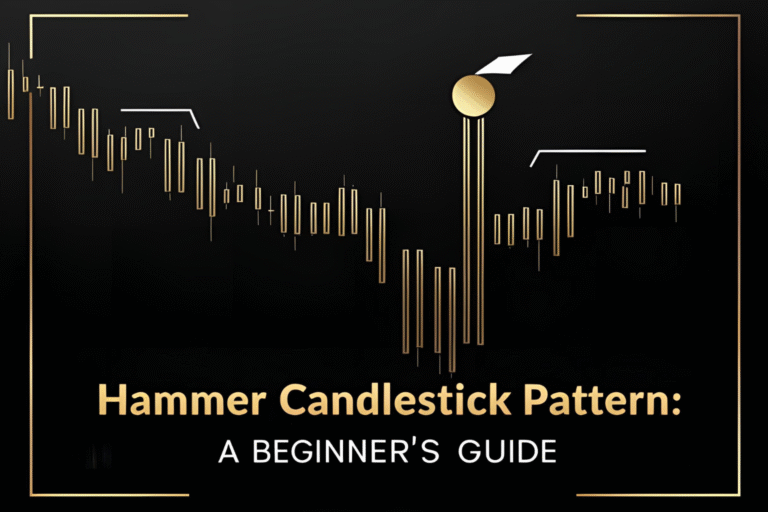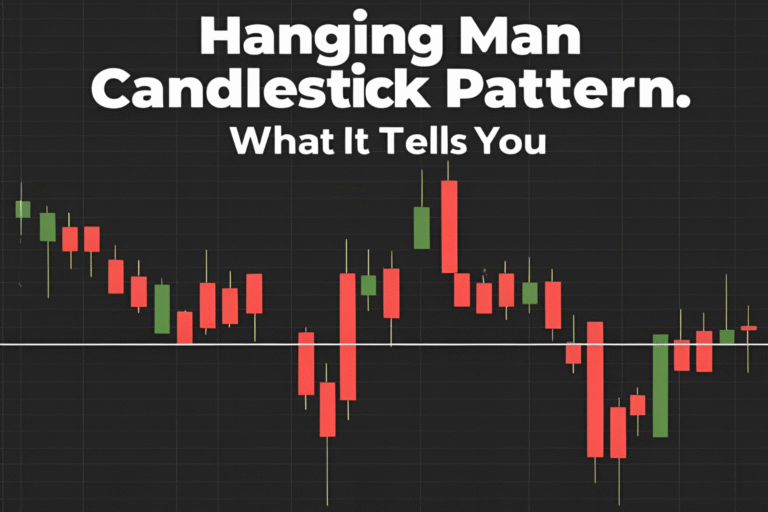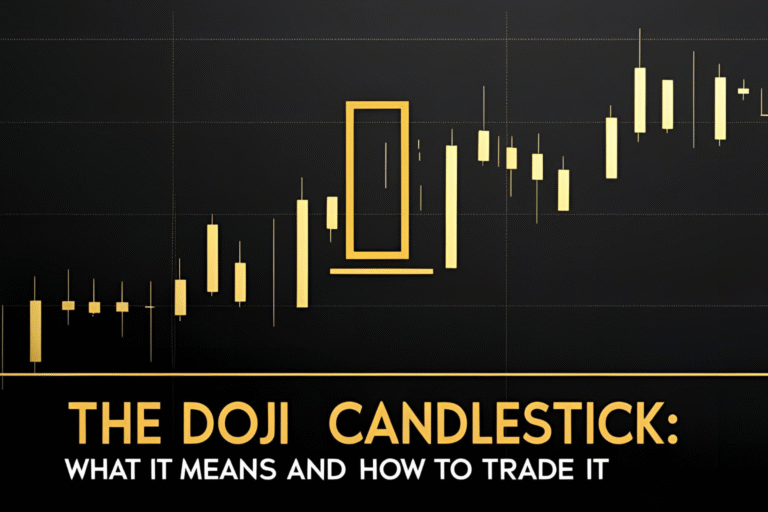Shooting Star Candlestick: What It Tells You
The Shooting Star candlestick is a bearish reversal pattern that warns traders of a potential trend change after a price rally. It’s one of the most visually distinct and psychologically powerful signals in candlestick charting—especially for beginners trying to recognize when the market is losing steam.
In this guide, we’ll explain what the Shooting Star pattern means, how to spot it, and how to use it in your trading strategy.
What Is a Shooting Star Candlestick?
The Shooting Star is a single-candle bearish reversal pattern that appears after an uptrend. It reflects a failed attempt by buyers to push the price higher, followed by a sharp rejection by sellers.
Key Characteristics:
- Small real body near the bottom of the candle
- Long upper wick (at least 2x the size of the body)
- Little to no lower wick
- Forms after a price advance
What the Shooting Star Tells You
This pattern shows that:
- Buyers were initially in control and pushed the price upward
- Sellers entered strongly, forcing the price back down
- The session ended near the opening price, signaling weakening bullish momentum
Essentially, it’s a visual sign that buying pressure is fading, and a reversal or pullback could follow.
How to Identify a Shooting Star Pattern
Use this checklist to confirm a valid setup:
- The candle appears after a clear uptrend
- The real body is small and at the lower end of the range
- The upper wick is long (2x or more the body size)
- No or very small lower wick
- Ideally forms near a resistance zone or overbought level
How to Trade the Shooting Star Pattern
Step-by-step guide:
- Identify the Uptrend
Ensure the market is trending upward before the pattern forms. - Wait for the Shooting Star Candle to Close
Confirmation only comes after the candle is complete. - Look for Additional Confirmation
Use tools like RSI (overbought), MACD, or horizontal resistance levels. - Plan the Trade
- Entry: Below the low of the Shooting Star
- Stop-loss: Just above the high of the Shooting Star wick
- Take-profit: At the next support zone or a set risk-reward ratio (e.g., 1:2)
Example: Shooting Star in Crypto
Let’s say Bitcoin is rallying and forms a Shooting Star at a key resistance zone on the 4-hour chart. The next candle closes bearish.
- This setup suggests potential short opportunity
- Entry would be below the Shooting Star low
- Stop-loss above the wick
- Target previous support zone
Common Mistakes to Avoid
- Trading without confirmation (don’t enter before the candle closes)
- Ignoring trend direction (the Shooting Star must appear after an uptrend)
- Misreading similar candles (like an inverted hammer that appears after a downtrend)
FAQs
What does the Shooting Star candlestick pattern indicate?
It signals a bearish reversal may be coming after an uptrend, showing rejection of higher prices.
Is the Shooting Star a reliable signal?
Yes—especially on higher timeframes (like 4-hour or daily) and when near resistance levels.
What’s the difference between a Shooting Star and Inverted Hammer?
- Shooting Star: Appears after an uptrend (bearish signal)
- Inverted Hammer: Appears after a downtrend (bullish signal)
Can I use the Shooting Star in forex or crypto?
Yes. The pattern works well in stocks, forex, and crypto, especially in liquid markets.
Do I need to combine the Shooting Star with other indicators?
It’s highly recommended to confirm the signal with volume, RSI, trendlines, or moving averages.




